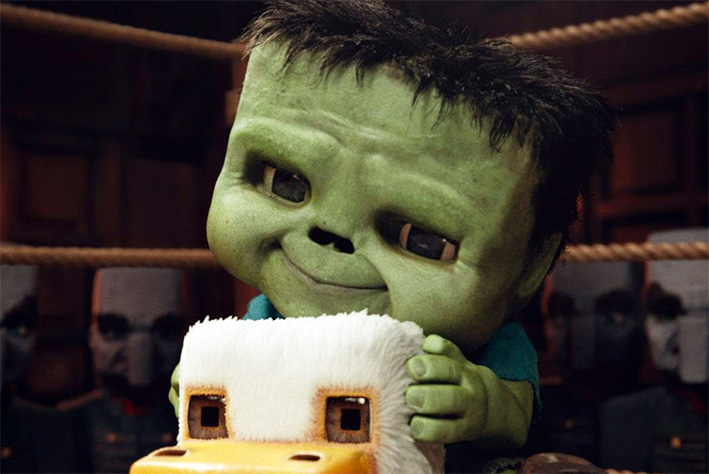Cinema and culture go together like chicken and jockey

Opinion
Not only does cinema provide a real-life canvas for memes, it has the power to unify brands, industries and platforms.
Despite the impact of streaming and digital on our viewing habits, cinema continues to thrive. In fact, consumer spend in cinema has increased 30% year on year in Q1 (Barclays), with admissions steadily climbing upwards.
Cinema’s resurgence is driven by multiple factors, not least an impressive film slate drawing people back to theatres. However, it’s the cultural phenomenon of cinema, and how it impacts the channels around it, that continues to define its place in the media landscape.
Organic factor in social
Social is now one of the largest media channels for adspend and for good reason: 82.2% of people in the UK hold a social media account (We Are Social Digital 2024). Mass exposure is one thing, but harnessing the virality of social media has long been a challenge for marketers, who continue to develop savvier ways to tap into that latent energy.
However, despite their commendable efforts and successes, some of the biggest digital trends remain almost entirely unpredictable. This is largely due to the organic spontaneity of social — something that cinema has frequently found itself at the heart of.
No better example is the unlikely marriage of Christopher Nolan’s Oppenheimer and Greta Gerwig’s Barbie, famously dubbed “Barbenheimer”. Two blockbusters with distinct target audiences became linked in a double-billed fixture, with thousands opting to watch both back to back. It was an unplanned social phenomenon and quickly became one of the biggest drivers for admissions.
More recently, meme power materialised in cinemas for the opening of A Minecraft Movie. Minecraft is one of the biggest-selling video games of all time and the success of its film adaptation was never really in doubt. However, nobody could have predicted the hysteria displayed by Gen Z.
Cinemas became embroiled in mass expulsion of popcorn, as cheers for the now infamous “chicken jockey” were said in unison. Videos of the event were seen across social media. It was a bizarre reaction that once again put cinema at the centre of a social media storm.
Memes live on the internet, but cultural moments require real-life hubs. It’s here that cinema finds its place, acting as a conduit between platforms and, subsequently, maximising the reach of all of them.
After all, in the case of both Barbenheimer and A Minecraft Movie, the meme was situated within the cinema itself.
Minecraft becomes biggest film of 2025, driving April box office boom
Unifying effect
To some, the ease of streaming films incentivises staying at home. But this misses the unique draw of cinema entirely.
For a start, even the most dedicated tech buff will never match the scale of cinema at home — it’s the most powerful AV experience.
It’s also a participatory event with friends, family and wider society, and one where most individuals are seated and attentive. In fact, using admissions data, we know that 98% of screenings are shared with more than one person. This is precisely why streaming platforms still need a theatrical release for their biggest productions.
And cultural moments needn’t rely on memes. Both Wicked and Bridget Jones: Mad About the Boy are prime examples of cinematic releases with a cross-generational pull stretching beyond digital media.
In the case of Wicked, you were hard-pressed to miss the fanfare in London, which saw key public centres draped in green and pink. St Pancras, one of the capital’s busiest stations, was taken over entirely and billboards were visible everywhere in the city.
Bridget Jones, too, generated wide appeal across multiple industries, with Waitrose citing a huge boost in recipe searches for leek and potato soup, marmalade and turkey curry — all well-known foods from the franchise.
The cultural power of cinema has the ability to unify brands, industries and platforms effectively.
Why cinema is becoming more prominent on AV plans — with DCM’s Karen Stacey
Cinema’s place in media
The quality of content is vital, but context matters too.
Research conducted with Everyday People found campaigns running on TV, video-sharing sites and cinema resulted in higher price premiums when compared with other media such as outdoor and newspapers.
Luxury brands have long used this to their advantage, but it suggests other brands can achieve a unique contextual boost from this association.
It’s here that we can find cinema’s role in the broader media landscape beyond AV — a unique place between digital and OOH. Major films become experiences that drive conversations and brands can harness this potential and context by targeting the most attentive audience in media: cinemagoers.
While you’ll never predict the next Barbenheimer, the emotional power of much-loved franchises is a near-guaranteed cultural moment waiting to happen. And one that may very well amplify your broader marketing strategy too.
 Michael Bensley is head of client at Digital Cinema Media
Michael Bensley is head of client at Digital Cinema Media




